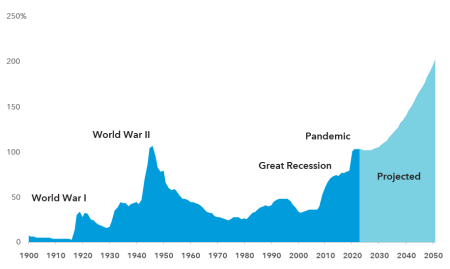The landscape of retirement in America is undergoing a dramatic shift, characterized by an unprecedented surge in debt among older adults. The cumulative debt held by Americans aged 70 and older has more than doubled in the past decade, exceeding $1.63 trillion, a figure that overshadows the total Social Security benefits disbursed annually. This represents a stark departure from previous generations, and raises serious concerns about the financial well-being of retirees and the overall stability of the retirement system. While increased longevity necessitates larger retirement savings, many older adults find themselves grappling with inadequate funds and resorting to debt to meet their basic needs.
The factors contributing to this escalating debt crisis are multifaceted. A significant portion of older adults, nearly half of those aged 65 and over, haven’t accumulated sufficient savings for a comfortable retirement, with nearly a third having saved nothing at all. Increased life expectancy, while a positive development, requires retirees to stretch their resources further, often depleting their savings before the end of their lives. Furthermore, the rise in healthcare costs, often associated with age-related medical conditions, imposes a substantial financial burden on older individuals, pushing them further into debt.
Societal attitudes towards debt have also evolved. The stigma once associated with borrowing has diminished, particularly as the generation that experienced the Great Depression dwindles. This shift in perspective, coupled with the readily available credit through credit cards and other lending instruments, has contributed to the normalization of debt, making it easier for older adults to accumulate debt without fully comprehending the long-term consequences. While debt can be a valuable tool for strategic investments, such as purchasing a home, it becomes problematic when used to finance daily expenses, leading to a cycle of escalating debt.
The consequences of mounting debt for older Americans are far-reaching. Higher debt levels translate into larger monthly payments, leaving less disposable income for essential expenses such as food, housing, healthcare, and prescription medications. This precarious financial situation leaves many retirees vulnerable to unexpected financial shocks like health crises, the death of a spouse, or natural disasters. Without adequate financial reserves, older adults facing such circumstances risk eviction, bankruptcy, and other devastating outcomes. The lack of emergency funds further exacerbates their vulnerability, leaving them with limited options to address unforeseen financial challenges.
Distinguishing between manageable and problematic debt levels is crucial. While mortgages typically represent a relatively low-risk form of debt, the accumulation of multiple debts, including car loans, student loans, mortgages, and credit card balances, can quickly become unsustainable. High payment-to-income ratios, elevated leverage ratios, and a substantial debt-to-wealth ratio are indicative of financial strain and signal the need for intervention. Expert guidance from financial counselors can be invaluable in assessing individual debt situations, developing debt reduction strategies, and navigating complex financial challenges. Free counseling services are available through organizations like the National Foundation for Credit Counseling, providing accessible support to those struggling with debt.
Addressing the growing debt crisis among older Americans requires a multifaceted approach. Classifying older households with debt into “low risk” and “high risk” categories can help identify the specific challenges faced by different groups and inform targeted policy interventions. Furthermore, understanding the root causes of debt accumulation, such as inadequate retirement savings, rising healthcare costs, and the increasing reliance on credit cards for daily expenses, is essential for developing effective solutions. Ultimately, ensuring the financial security of older Americans necessitates a comprehensive strategy that addresses the underlying economic vulnerabilities and promotes responsible financial practices throughout the lifespan.










